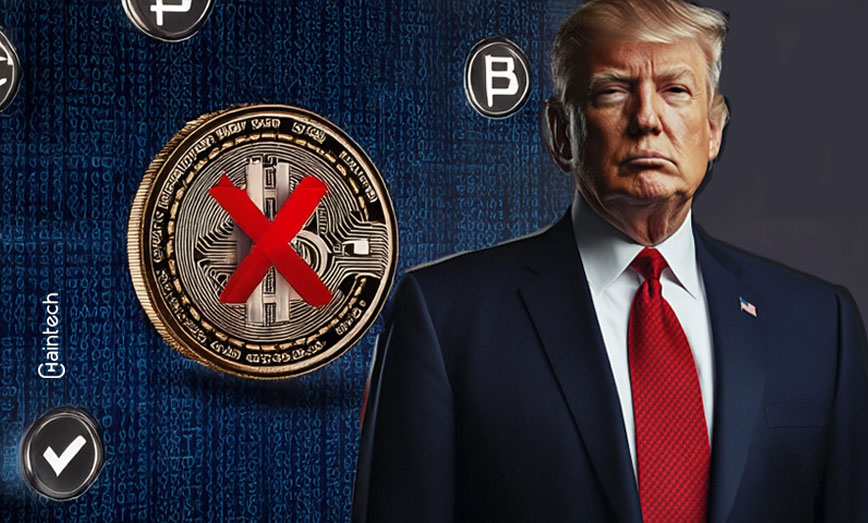CBDC Banned in US: How Stablecoins Shapes Global Finance

What happens when a global leader stops its plans for a national digital currency overnight? Most Indians prefer digital payments. Now, imagine a world where governments control every digital transaction. Former US President Donald Trump’s decision to halt Central Bank Digital Currency (CBDC) development in America—effectively making the CBDC banned in US—sparks debate on financial freedom, privacy, and the rise of private alternatives like stablecoins.
This move impacts the US and global markets, including India’s growing crypto economy. Let’s break down what this means.
Key Takeaways
- US stops CBDC plans: Federal agencies must drop all digital dollar projects immediately.
- Privacy focus: Trump’s order prioritizes avoiding government control over money.
What is a CBDC?
CBDC or Central Bank Digital Currency is the online version of the country’s money, and it is issued and managed by the government. For instance, while China implements the digital yuan, India is experimenting with the digital rupee.
CBDCs let authorities track transactions in real time. Supporters say this reduces fraud. Critics argue it risks privacy; governments could block accounts or monitor spending habits. Over 130 countries are exploring CBDCs, but the US just slammed the brakes.
Interesting Fact:
Stablecoins, including USDT and USDC, have an annual transaction volume that exceeds $150 billion which is more than the GDP of countries like Hungary or Kuwait. Having said that, with the US easing its CBDC development, stablecoins are projected to have a more significant influence in the global economy, particularly in markets that heavily rely on remittance like India.
Trump’s executive order
Trump’s order focuses on two major actions. First, it halts all CBDC development—no US agency can research or create a digital dollar without approval from Congress. Second, it encourages private companies to develop USD-backed stablecoins, giving them a significant boost. This decision matters for several reasons. There are concerns from the US government that CBDCs may allow monitoring of citizens’ spending and other financial activities.
Moreover, countries like China may take advantage of the opportunity and use it to subvert the use of US dollars around the world. Stablecoins, however, provide a balanced solution—offering the benefits of digital dollars without centralized government control. This shift could redefine how digital currencies are used worldwide.
Impact on the crypto market
Markets reacted quickly to the news. Bitcoin surged 5% within 24 hours, while Indian crypto exchanges like CoinSwitch reported a 15% increase in stablecoin trades. This shift happened for clear reasons. Startups now expect faster regulatory clarity for stablecoins, making it easier for them to plan and grow. Big investors are also turning their attention to projects like Tether (USDT) and Circle (USDC), seeing them as safer bets.
The US stepping back from CBDCs creates opportunities for other countries. For example, India’s digital rupee trials might accelerate, filling the gap left by the US. This move could reshape how digital currencies are adopted and used globally.
What is the role of stablecoins in the new framework?
Demonstration with Stablecoins which are merged to currencies like the US dollar will remain the key point of Trump’s strategy. These tokens offer unique benefits for India. A worker in Mumbai sends USDC to Dubai in seconds, cutting costs compared to traditional banks. Farmers in Punjab use stablecoins to receive payments without worrying about currency fluctuations. Startups sidestep RBI’s 30% crypto tax by settling international deals in USDC.
Unlike government-controlled CBDCs, stablecoins operate on private blockchains. However, in some regions, CBDC banned policies have raised concerns about limiting financial innovation. This setup allows faster innovation but demands strict rules to prevent fraud. For example, companies like Tether must prove they hold enough dollar reserves.
The push for stablecoins reflects a global shift toward private-sector solutions, blending digital efficiency with financial freedom. Yet, as debates continue, some regulators argue that CBDC banned decisions could drive more adoption of stablecoins as an alternative.
CBDC vs. stablecoin: A comparative analysis
| Factor | CBDC | Stablecoin |
| Control | Government | Private companies |
| Privacy | Low | High |
| Fees | Set by banks | Low or zero |
| Speed | Slower (bank systems) | Instant |
| Global Use | Limited to borders | Borderless |
Stablecoins win for cross-border trade but need trust in companies. CBDCs offer safety but sacrifice privacy.
Global implications of the CBDC ban
The US decision shakes up global finance:
- China gains influence: Its digital yuan may attract African and Asian nations.
- India’s opportunity: RBI’s digital rupee could fill the gap in USD-dominated trade.
- Banking changes: European banks now explore stablecoins for remittances to India.
However, 60% of global trade uses dollars. Stablecoins like USDT keep this dominance alive digitally.
How are other countries reacting to the US CBDC ban?
The US decision to halt its digital dollar plans creates ripple effects worldwide. For instance, the European Union fast-tracked its digital euro-pilot by six months, aiming for a 2026 launch. Meanwhile, China expanded its digital yuan trials to 15 new countries, targeting Belt and Road Initiative partners.
The RBI doubled its digital rupee testing to 50 cities in India after the US move. Smaller nations like Nigeria and Jamaica also paused their CBDC projects, fearing isolation from dollar-linked trade. However, Japan and South Korea reaffirmed their CBDC commitments, calling them “critical for future-proofing finance.”
This splits highlights a global divide: nations with strong currencies push CBDCs, while others lean on stablecoins. The US CBDC ban forces countries to pick sides—adopt private digital dollars or risk reliance on China’s state-controlled alternatives.
What does this mean for Indian investors and startups?
Indian crypto investors and startups face both risks and opportunities. On the one hand, the US CBDC banned boosts stablecoin demand, helping platforms like CoinDCX and WazirX attract users. For example, Coin Switch reported a 25% spike in USDC trades post-announcement. Startups building cross-border payment tools using stablecoins also gain traction—Fintech firm NiYO plans to launch a rupee-USDC remittance corridor by 2025.
However, RBI’s strict 30% crypto tax remains a hurdle. Investors now seek clarity: Will India ease rules to compete in the stablecoin race? Experts suggest the government may allow banks to hold stablecoins, mirroring Singapore’s model. Until then, Indian traders rely on global exchanges like Binance. The US move indirectly pressures India to speed up its digital rupee or lose ground to private tokens.
Did You Know?
Stablecoins like USDT and USDC are used in over 70% of crypto trades worldwide. They act as a bridge between traditional money and crypto, making them vital for global transactions, especially in countries like India.
Can blockchain technology fill the gap left by CBDCs?
Blockchain networks like Ethereum and Solana could replace CBDCs for public transactions. For example, Ethereum’s upcoming upgrade (EIP-3074) aims to slash gas fees, making micropayments viable. Projects like Polygon have already helped Indian states digitize land records without CBDCs. Blockchain offers three CBDC-like benefits:
- Transparency: Public ledgers reduce corruption in welfare schemes.
- Speed: Instant settlements cut delays in stock trading.
- Cost: No middlemen in remittances save migrant workers fees.
However, blockchain lacks central control—governments can’t freeze funds during crises. Still, hybrid models are emerging. The National Payments Corporation of India (NPCI) tests a blockchain-powered UPI upgrade, blending CBDC efficiency with decentralized security. While the US abandons CBDCs, blockchain steps in as a neutral, global alternative.
The future of digital currency in the US
Trump’s team aims to finalize new crypto regulations by late 2025, prioritizing three areas. First, stablecoin issuers must undergo monthly audits to prove they hold sufficient USD reserves. Second, stricter penalties will target fraudulent token creators to protect investors. Third, upgrades will integrate stablecoins with traditional banking apps, simplifying transfers and payments.
For Indian investors, these rules mean safer ways to hold assets like USDC or USDT. Specialists predict that the market for stablecoins will expand to $300 billion in 2026 due to the growing worldwide demand for inexpensive and efficient transactions. It marks a new era whereby decentralized innovation can be quickly fused with regulated financial systems, essentially paving the way for other countries to follow suit.
Conclusion
Trump’s move to enforce a CBDC banned in US policy reshapes global finance. Stablecoins now rise as key privacy, speed, and cross-border trade tools. For India, this shift could slash remittance costs and boost tech collaborations with firms like Tether or Circle. Governments worldwide scramble to blend regulation with innovation, fearing private tokens might outpace state-controlled systems.
Stay informed—explore how stablecoins simplify international transactions while the CBDC banned in US debate reshapes money’s future.
FAQs
1. Does this ban affect India’s digital rupee?
No. India’s CBDC trials continue separately.
2. Can Indian banks issue stablecoins?
Not yet. RBI rules currently bar banks from engaging in crypto activities.
3. Are stablecoins legal in India?
Yes, but profits face a 30% tax under current laws.
4. Will this lower remittance costs for Indians?
Yes. Stablecoins cut fees for sending money abroad.
5. How risky are stablecoins?
Risk depends on the issuer. USDC is audited; others may not be.









